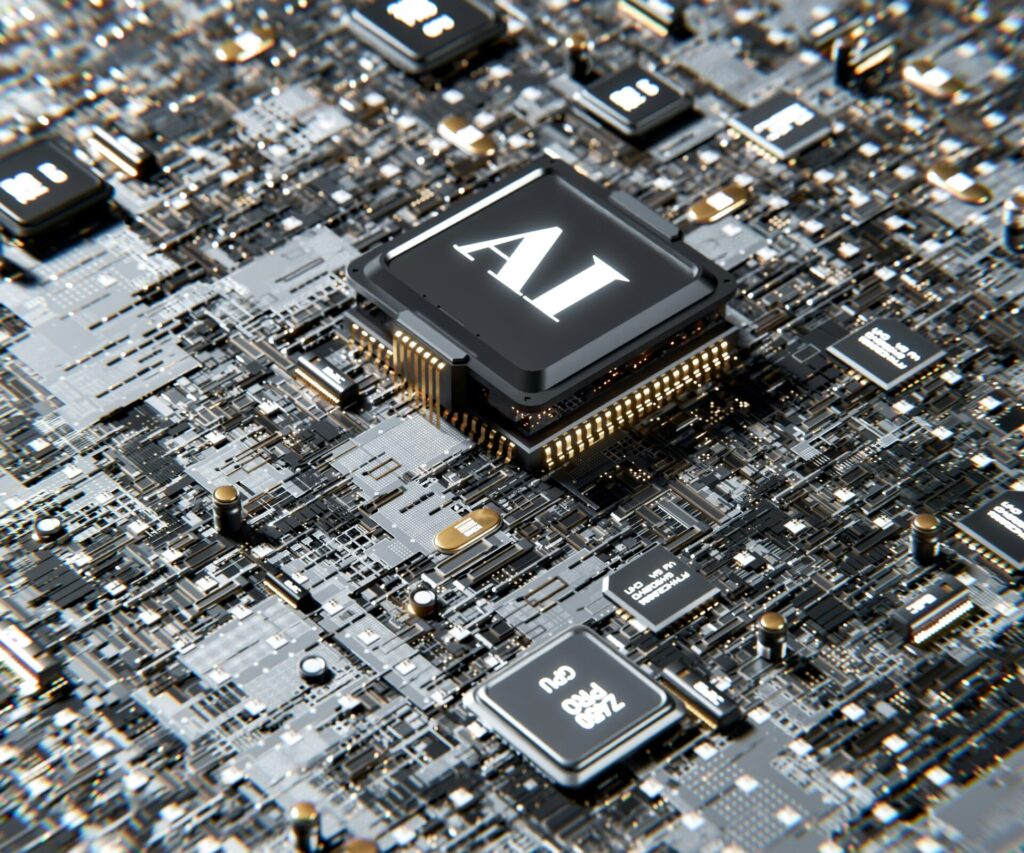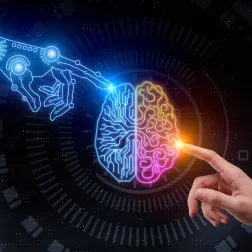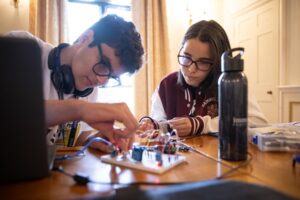In a world where more people have a keen interest in artificial intelligence, we want to know what AI looks like in the real world – its threats, challenges, opportunities and solutions to modern-day human problems. A detailed case study on AI can help us understand whether artificial intelligence can truly help humans thrive. And if so, what might be the common downfalls of depending on AI in certain industries? In this article, we’ll take look at one artificial intelligence case study to form insight into this compelling question.
What is AI? Case study on artificial intelligence
Artificial intelligence, or AI, is the theory and development of computer systems that are able to perform tasks normally required by human intelligence. Some examples of these tasks include speech recognition, visual perception, decision-making, and translation between languages.
Every time you say “Hey Alexa..” you’re using AI. But in what other areas can we find AI in our lives? Take a look at these common examples you’re bound to already be familiar with:
- Netflix uses AI to determine streaming suggestions based on your viewing history
- Facebook uses all the data you input on the platform, from the videos you watch to what you say in your status update, to determine which advertisements you might be interested in
- Universities use essay submission software to determine if work has been plagiarised or generated through AI
- Google Maps utilises an AI assessment of ongoing satellite imagery to determine the best route for you to take on a given journey
From the above examples, you can see how artificial intelligence is no longer a figment of a mere Sci-Fi novel and something we commonly interact with in our everyday lives, often without even thinking about it.
Scientists, scholars, innovators, and every day people are keen to learn more about AI and what it can do on a more complex level. Let’s dive in and discover a key case study on AI.
Human Brain Chips, Elon Musk’s NeuroLink – An AI case study
Scholars have long been interested in how the brain works. Neuroscientists in particular have a vested interest in understanding the human brain, what makes it tick, and the causes and solutions to common conditions that limit a person’s uses of their brain and bodily functions.
The last two decades has seen significant increased interest in the realm of neurotechnology. In 2008, a monkey with an implant was successfully able to control a robotic arm to feed itself through activity in the brain, and as a result, in 2012, the first human brain-controlled robotic arm became a success. In 2017, a paralysed human was able to control a cursor mentally to type out words and sentences on a computer and in 2018, that same person was able to use a tablet functionally to browse the web, send emails and play games. Each of these tales constitutes a remarkable case study on AI in its own right.
In 2019, Neurolink, a private company founded by famous billionaire and CEO of Tesla Elon Musk, introduced further advancements in AI brain technology with a pig named Gertrude.
Gertrude had a wireless device implanted in her brain that was able to monitor a thousand neurons at a time, a significant advancement in neuroscience technology that could potentially become another tool for understanding the brain, as well as lead to other technological advancements. Prior to this device, only 300 neurons could be transmitted at a time – this piece of tech was pretty ground-breaking.
From that pig experiment, it became clear to the world that Neurolink was seriously invested in this area of neurotechnology and had the tools and vision to potentially advance AI beyond what it had been capable of up to that point in time. It also became clear that advancements in artificial intelligence could come along with serious ethical issues.
Many animal rights activists have called into question the ethics of implanting the device into the brains of innocent animals, and many petitioned the US government to see an end to NeuroLink’s animal testing. The essential question here, and one that is not unique to this case study on AI: Is it ever okay to experiment on animals to advance the human condition?
Nonetheless, human beings were already in NeuroLink’s sights. “The initial goal of our technology is to help people with paralysis regain independence through the control of computers and mobile devices.” Neurolink states on their website. “Our devices are therefore currently being designed to one day give people the ability to communicate more easily via text or speech synthesis, to follow their curiosity on the web, or to express their creativity through photography, art, or writing apps.”
In April 2021, another marvel was presented to the world by the company in the form of a real live macaque monkey that demonstrated its ability to play a video game called Mind-Pong using only brain power, thanks to their new N1 device and pager. The monkey was able to play the game successfully with only its mind.
This communication from the brain to the screen was made possible through a small device and pager implanted into the monkey’s brain. This device essentially translated the primate’s synaptic input to initiate an action. In other words, the device was able to tell the hardware what to do based on the messages received from the monkey’s brain activity. Sounds like science fiction, right?
Further Reading: Explore how the human brain inspired the first artificial neurons in our article on the birth of the artificial neuron
Neuroscientist Dr Paul Nuyujukian stated that “there was definitely a lot of clever engineering that went into that. To build a device that can transmit 2,048 electrodes worth of spiking information… over a radio, wirelessly… when you have that many channels, the performance that you should be able to get should eclipse what we’ve been able to do in the academic field.”
Despite the backlash received from animal rights activists, the video marked an important milestone in neurotechnology, in just one small device capable of receiving and sending brain signals like never before.
The next step for NeuroLink is to be able to start clinical trials in which humans would become the experimental subjects. The N1 is currently awaiting FDA approval before it can be tested on humans*. If NeuroLink does get accepted for human trials, the implanting of it into the human brain will involve major, invasive neurosurgery that doesn’t come without risk. This type of surgery requires a patient to have a hole drilled into their skull and have the device implanted into the surface of their brain. Infection, bleeding and tissue damage are all common risks of this type of surgery.
If the clinical trials work and the N1 is successful, the potential to improve patients’ lives who suffer from conditions such as Parkinson’s, epilepsy, dementia and even psychiatric diseases is abundantly clear, though not without risk.
Will NeuroLink eventually succeed in creating a nation of essentially cyborg humans? Will these advances improve human life for the better? We’ll just have to wait and see!
Check Out Artificial Intelligence Summer Programmes
Has this artificial intelligence case study stoked your curiosity about AI? Check out Immerse Education’s Artificial Intelligence courses for teenagers here. Spend your summer meeting like-minded peers, advancing your skills in artificial intelligence, discovering further and explore one of the world’s most prestigious universities.
*As of January 2024, NeuroLink has been implanted into a human brain. Read more here.
Join the Immerse Education 2025 Essay Competition
Follow the instructions to write and submit your best essay for a chance to be awarded a 100% scholarship.





















